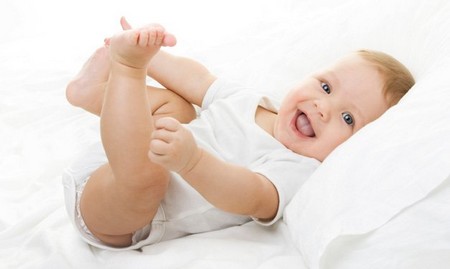Best Way to Understand Your Baby’s Development for the Second Six Months
For the first six months of your baby’s life, you were the centre of her world: she relied on you for all her physical and emotional needs. During her second six months, however, she’ll begin to develop new skills to help her extend her horizons, explore her environment, assert her own will, and discover her independence.
The wider world
Reaching her natural milestones – such as discovering how to sit, crawl, and communicate – enables your baby to really start interacting with the wider world. She can see a favourite toy and move forwards to grab it. Her older brother may pull a funny face to make her laugh and she can pull one back! If she meets another baby she can reach out with interest towards him.
Developing independence
Watching your baby acquiring new skills is exciting, and will give you a sense of her developing independence. The fact that she can soon sit on her own, crawl happily around on the floor, amuse herself with a new toy, and feed herself at the table gives you a little taste of freedom: every now and then you may even have time to sit down with a cup of coffee. A daily outing in the buggy is another step in introducing your baby to the wider world, and gives you both important “out and about” time together.
New relationships
Your baby will also become more involved and responsive with other people, especially close family members. With their instinctive sociability, babies at six months and older can start to develop a close bond with people other than their parents, such as grandparents and caregivers. This is a good time to help your baby establish separate relationships with people who will become important in her life – especially as, in a few months’ time, “stranger anxiety” may make new friendships a lot harder.
Part of the family
During these next six months your baby will also really begin to enjoy her siblings, or love to watch an older toddler or child bouncing around. And as she begins to move about herself and becomes capable of doing more things, many activities can be shared, such as singing songs together, playing clapping games, or having a game of chase (on all fours!) around the sitting room. Older children can also play the role of teacher for your baby. She’ll love to imitate them and may try hard to look at a book or blow raspberries like her big brother or sister.
Making friends
Your friends’ babies can offer similar benefits. If this is your first baby, her encounters with other babies and toddlers will probably be as a result of the friendships you have made during pregnancy and after birth. Over the next six months, your baby and your friends’ babies may start to interact, gurgling at each other, touching, and trying to imitate each other’s sounds and movements.
Categories
Advertisements
Recent Articles
 How to Understand Bed Sizes – A Small Guide
How to Understand Bed Sizes – A Small Guide How to Select Some Must Have Kitchen Accessories
How to Select Some Must Have Kitchen Accessories Best Way to Change a Car Tire
Best Way to Change a Car Tire Best Way to Write an Affirmation
Best Way to Write an Affirmation Best Way to Take Charge of Your Financial Life
Best Way to Take Charge of Your Financial Life Best Way to Survive a Party When You Don’t Know Anyone
Best Way to Survive a Party When You Don’t Know Anyone Best Way to Stop Self Sabotaging Yourself
Best Way to Stop Self Sabotaging Yourself Best Way to Start Journal Writing
Best Way to Start Journal Writing Best Way to Speak with a Powerful Voice
Best Way to Speak with a Powerful Voice Best Way to Simplify Your Life
Best Way to Simplify Your Life Best Way to Respond to a Put-Down
Best Way to Respond to a Put-Down Best Way to Reduce Acne Breakouts
Best Way to Reduce Acne Breakouts Best Way to Recover from Dining Disasters
Best Way to Recover from Dining Disasters Best Way to Quit Your Job Gracefully
Best Way to Quit Your Job Gracefully Best Way to Make Your Own Website
Best Way to Make Your Own Website



Leave a Reply